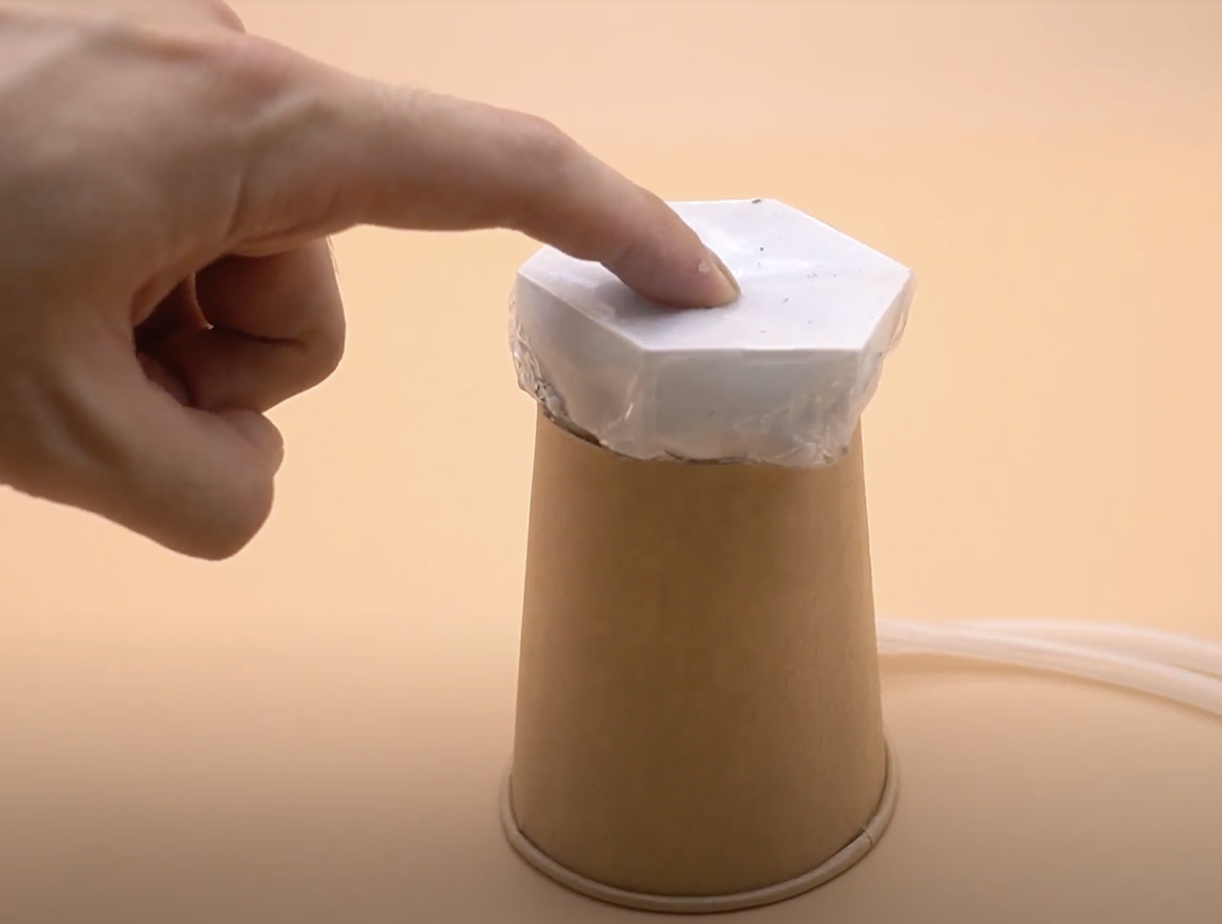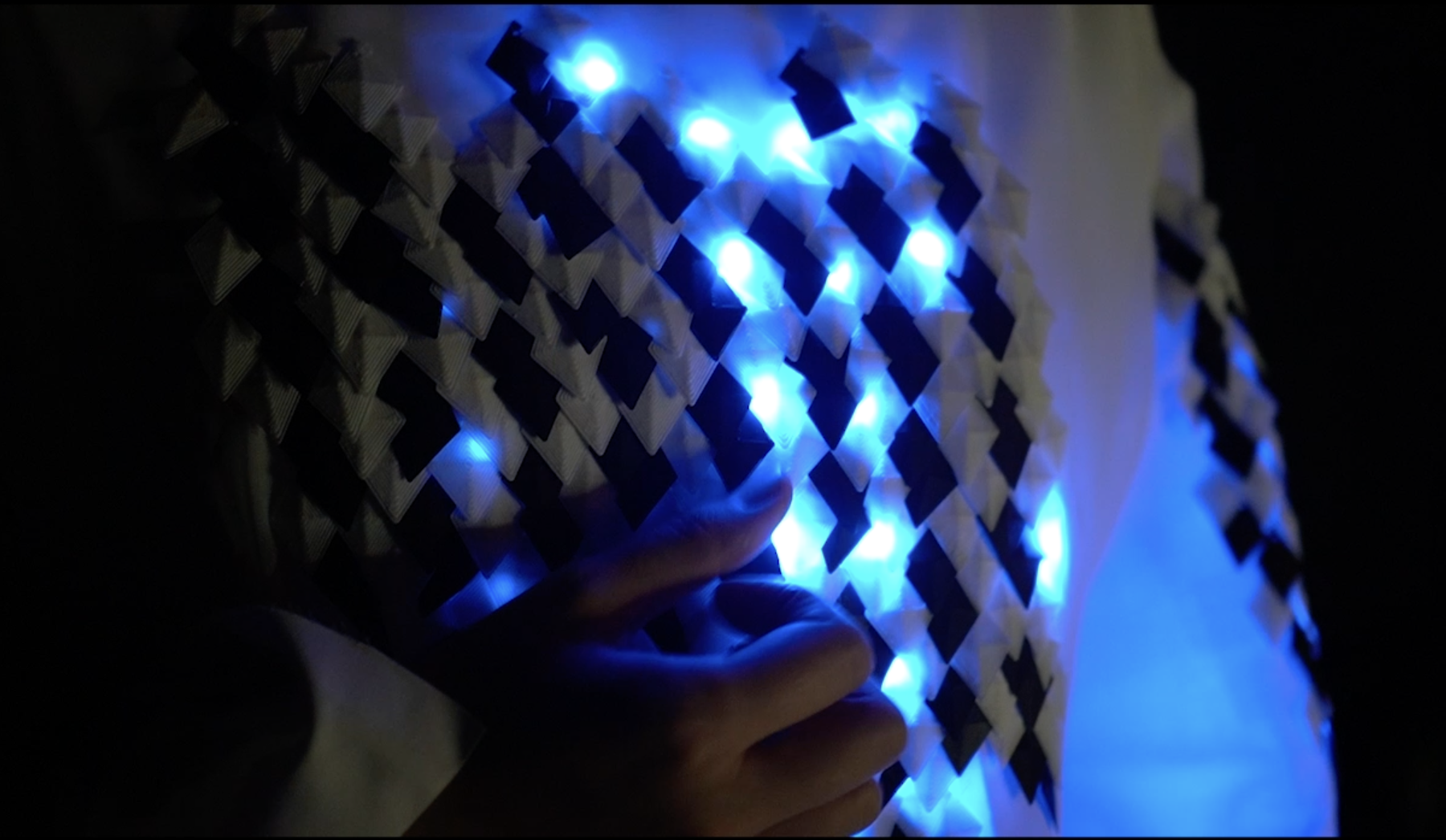MultiJam: Fabricating Jamming User Interface using Multi-material 3D Printing
unseok Yang and Junichi Yamaoka
This study proposes a method of fabricating jamming user interfaces using multi-material 3D printing. Through customized fabrication software, users can decide the properties of components of the interface, such as the size/shape of beads. The software automatically renders a membrane and an inner complex of beads after users decide the properties, which simplifies the manufacturing process of the jamming interface. Moreover, 3D printing allows the interface to have a double structure consisting of multiple rooms functioning jamming independently, which realizes a richer haptic experience. Finally, this paper describes the manufacturing process of the jamming interface using 3D modeling software/3D printing. It demonstrates the merits of this method with several applications, such as the haptic device and the shape-changing controller.
Munseok Yang and Junichi Yamaoka. 2022. MultiJam: Fabricating Jamming User Interface using Multi-material 3D Printing. In Sixteenth International Conference on Tangible, Embedded, and Embodied Interaction (TEI ’22). Association for Computing Machinery, New York, NY, USA, Article 61, 1–5. DOI:https://doi.org/10.1145/3490149.3505565






